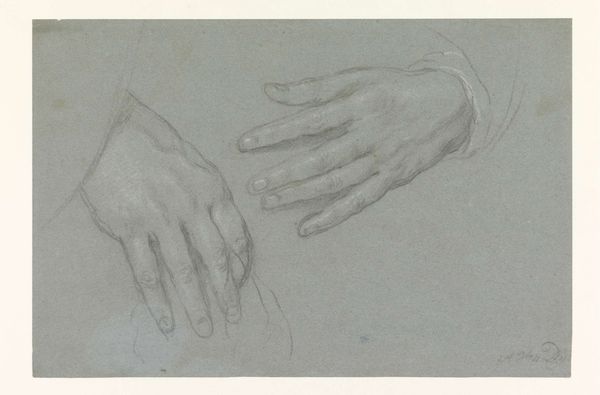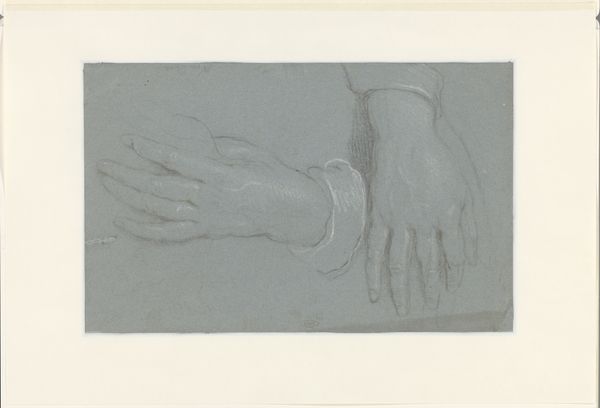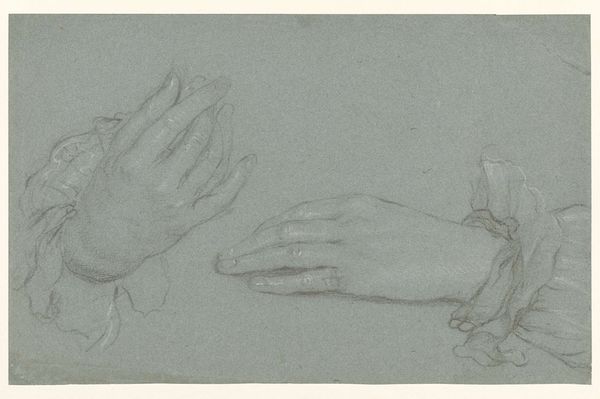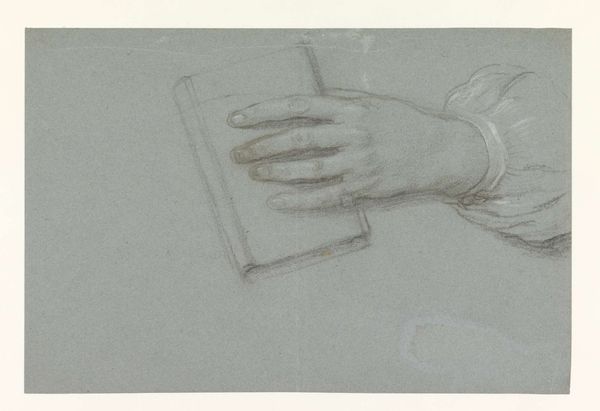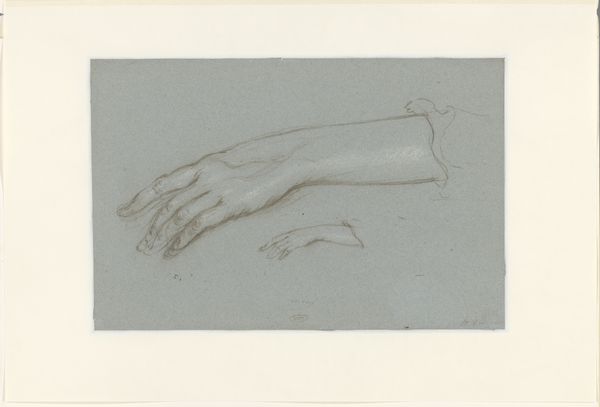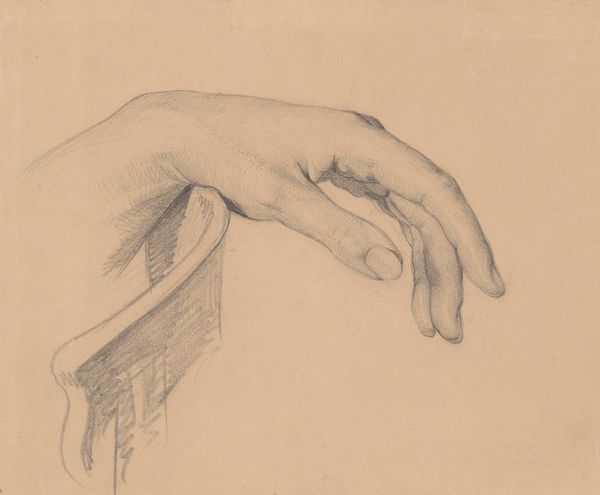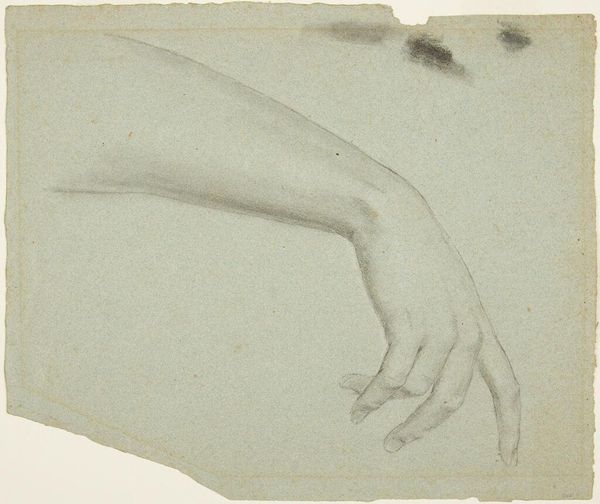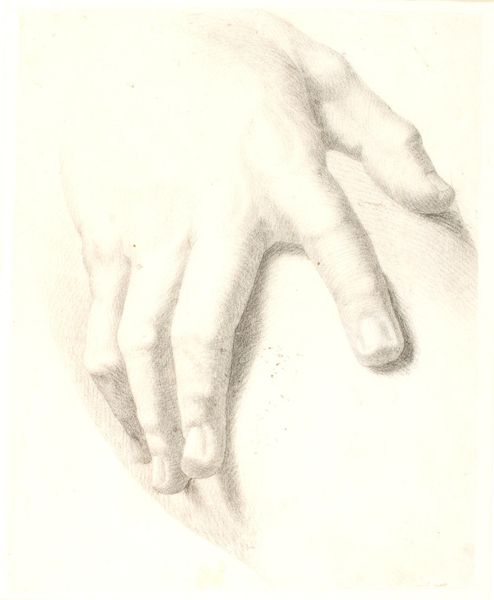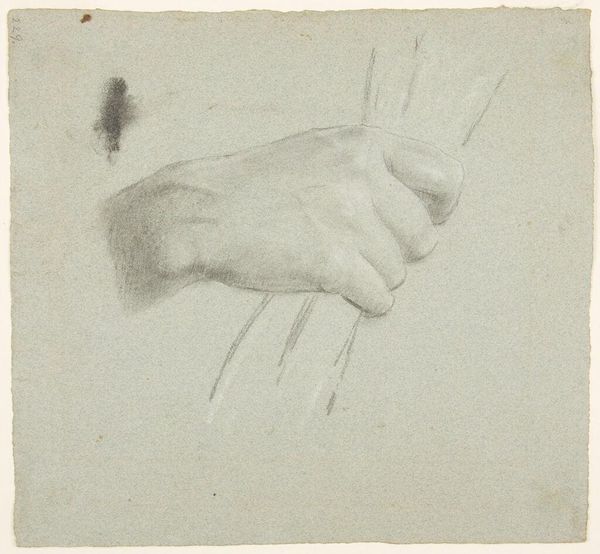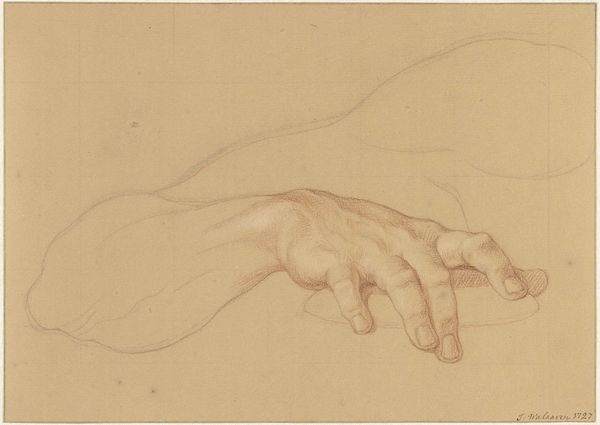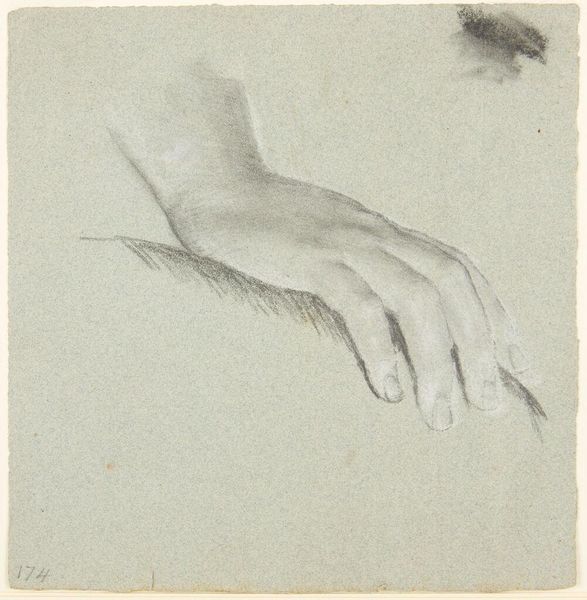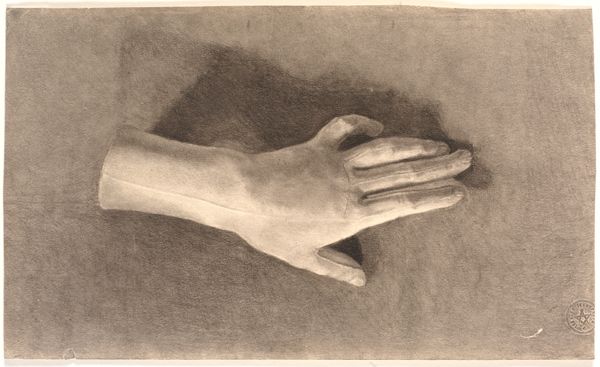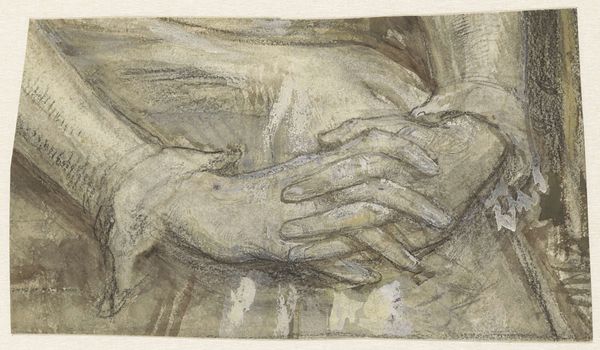
drawing, pencil
#
portrait
#
pencil drawn
#
drawing
#
baroque
#
pencil sketch
#
figuration
#
pencil drawing
#
pencil
#
portrait drawing
Dimensions: height 280 mm, width 445 mm
Copyright: Rijks Museum: Open Domain
Curator: This is "Two Studies of Hands," a drawing by Anthony van Dyck, likely created between 1610 and 1641. It resides here at the Rijksmuseum. Editor: The stark contrast in shading creates a striking study of form and texture. There's an unfinished quality that lends an intimate air to the hands. Curator: Indeed. Van Dyck's skilled use of pencil transcends mere anatomical study; the work serves as an archive, of sorts, speaking of classical gestures. Editor: Classical, yes, but I see more. Aren't hands potent symbols of social standing throughout history? Look at the delicate rendering and inherent aristocracy – almost emblems of status. Curator: I see your point. Hands represent capability and action, but in a portrait study they also can suggest intellect, piety or refined leisure. And note how this relates back to his era's perception of art and nobility. Editor: Exactly. Van Dyck straddled that courtly environment. These aren't just any hands; they’re performed, embodying power as well as artistic contemplation. Consider, too, the art market's own hand in constructing him, literally, as an art world commodity. Curator: Well observed. What lingers for me is how powerfully simple sketches like these reveal both a technical virtuosity and a timeless language—a silent poetry—accessible even now. Editor: For me, it is more that drawings give us intimate access to the process by which the power of symbolic meaning and representation can be created through art in court, art that outlives kings, governments, movements.
Comments
No comments
Be the first to comment and join the conversation on the ultimate creative platform.
